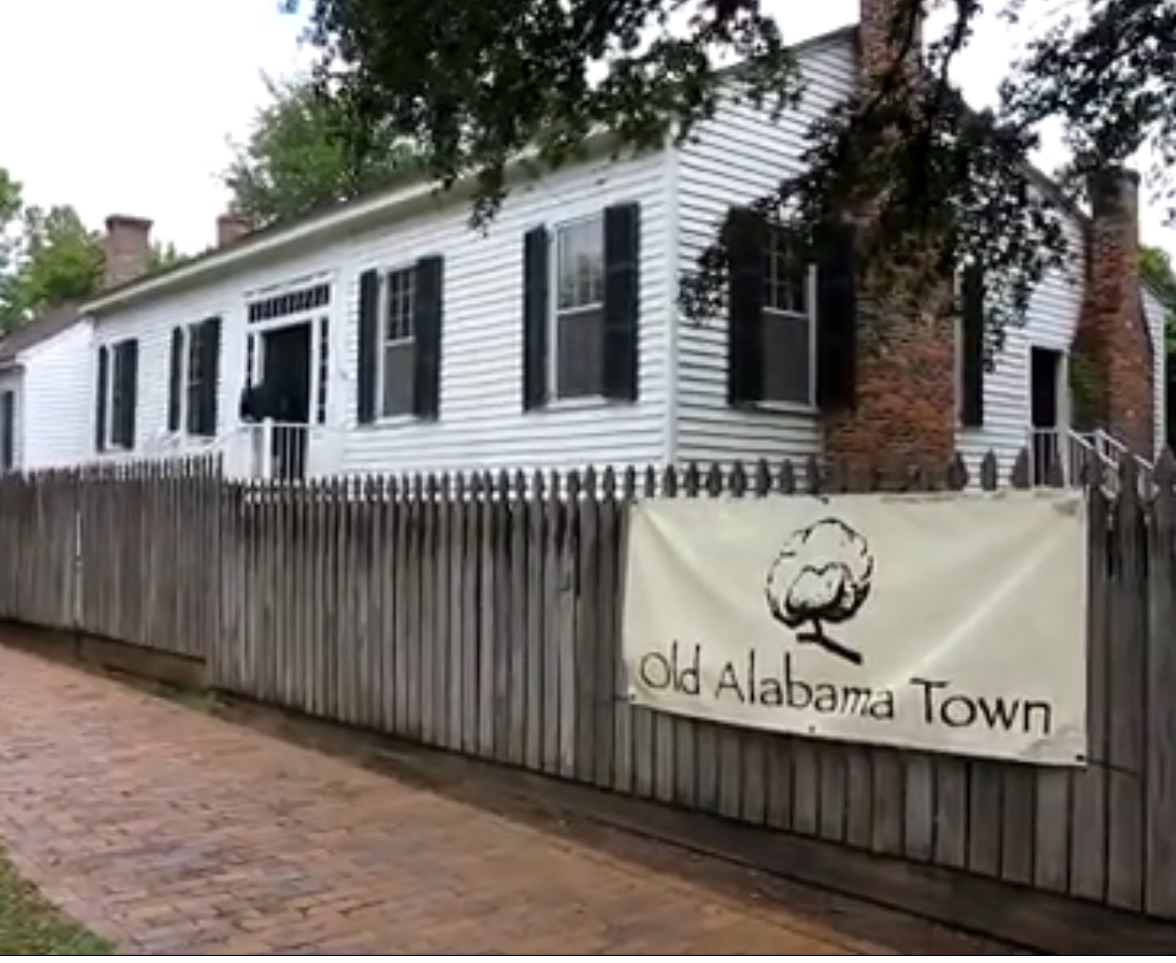Anyone who grew up in or around Montgomery, especially from the late 1970’s to the present, probably visited Old Alabama Town (formally named The Old North Hull Street Historic District) for a school tour. How many of those students have returned to Old Alabama Town since a school tour? For those who did not grow up in Montgomery, how many “newcomers” have made a trip to Alabama’s foremost historic district to learn more of Montgomery, and Alabama’s history? If you have never traveled to Old Alabama Town (OAT), or it has been a while, I hope this article will encourage you to make a trip downtown and spend time learning while having fun.
Old Alabama Town, which is operated by Landmarks Foundation of Montgomery, encompasses six city blocks with over 50 restored buildings. These buildings are all original and have been restored to their original use and purpose. A few of the buildings stand on their original sites while the majority have been moved by Landmarks from around central Alabama. OAT has come a long way since its inception in the 1970’s. Originally, Landmarks Foundation acquired the Ordeman house, and the cottage next door, from Miss Maude Shaw in 1968. The home and grounds were painstakingly restored to their original state and opened to the public in 1972.
Since that time, many changes have taken place along North Hull Street. The tour area now encompasses three blocks and are broken down to accommodate time and interests. There is the working block, living block, and Ordeman house. The working block includes an operational cotton gin and gristmill, blacksmith, old time pharmacy, printing press, and other “working” type buildings. The living block depicts how people lived in the 19th century, such as a one room schoolhouse, corner grocery store, and log cabin, to name a few. You will also tour the oldest known building in Montgomery, Lucas Tavern. This is where the General Marquis de Layfette was entertained on April 2, 1825. While Layfette was not served a good Chris’ Hot Dog, the staff of OAT have enjoyed many!
While all of OAT is fascinating, the Ordeman House is my personal favorite. The tour of this Urban Farm is scheduled, but worth making time. The city town-home was built by German immigrant, Charles Ordeman. Mr. Ordeman arrived in America through New York in the early 1840’s, where he married his wife, Sarah. They moved to Montgomery, and he was hired by the city as an architect and engineer. Mr. Ordeman designed and built several buildings around Montgomery, including the old Court House and Court Street Methodist Church. While he may have designed other structures in or around Montgomery, these are the only known structures designed by Mr. Ordeman.
By all accounts, Mr. and Mrs. Ordeman were involved in the social life of Montgomery and we know Mrs. Ordeman was a member of St. John’s Episcopal Church. Like many young businessmen of the day, Mr. Ordeman was a speculator. He mortgaged his possessions and invested heavily in the Montgomery Gas Company. Unfortunately, there were delays with the gas company’s opening and the Ordeman’s went bankrupt. They left town in disgrace and the last known location for them is Mobile. Other than Mrs. Ordeman’s transfer of church membership, no other evidence has been discovered which ties them to Mobile. It is as if they just disappeared, which is a tragic end for such a promising and talented young businessman.
Originally, the thought was the Ordeman home was occupied by the Ordeman family. In recent years, however, a small newspaper article was found advertising the home for sale stating it had never been occupied. New information suggests Mr. Ordeman purchased the existing cottage on North Hull Street along with the adjourning vacant lot on the corner of North Hull and Jefferson Streets. He designed and built the Italianate style, three-story town home on the vacant lot, along with the outbuildings. The house is unique for the time in that it has an interior bathroom and closets in the bedrooms, both of which were uncommon in 1850. There is also a dry mote around the home. This allows for full windows in the basement, where two dining rooms and pantries are located. Mr. Ordeman may have initially intended to live in the home, but his change of financial circumstances forced the sale. The first occupants of the home were Mr. and Mrs. Julius Caesar Bonaparte Mitchell, Jr. of Mt. Meigs.
There is so much more to tell about the Ordeman House and the rest of OAT, but that is best left to a personal guided tour. All of the buildings have interesting stories, but they, are better enjoyed on a tour. Perhaps this article will entice and encourage you to take a trip to OAT, visit the 19th century, peruse the gift shop, view exhibits, and enjoy the best and most expansive preservation site in Alabama.

